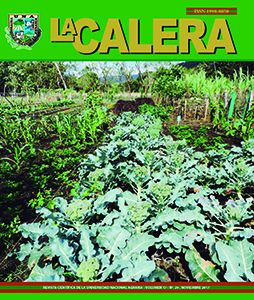Caracterización numérica de la diversidad forestal de 14 de comunidades rurales en cinco municipios de Nicaragua
DOI:
https://doi.org/10.5377/calera.v17i29.6527Palabras clave:
UFP, Herramientas univariadas y multivariadas, índices de diversidadResumen
Los bosques son importantes para las comunidades rurales y el país, por lo que es necesario identificar las especies y determinar su estado, utilización racional, y establecer políticas de conservación en sus hábitats. El objetivo del estudio fue comparar comunidades rurales considerando la presencia de la diversidad florística arbórea. Mediante encuestas se recopiló información durante el período 2013-2015, identificaron especies forestales en 14 comunidades rurales de Nicaragua en los municipios de Las Sabanas, Nandaime, Somotillo, Villanueva y El Crucero. Se muestrearon 604 Unidades Familiares de Producción (UFP) que contenían 3677 registros. Fueron utilizadas herramientas univariadas (ANDEVA, LSD) y multivariadas (análisis de correspondencia, componentes principales y conglomerados) en la comparación de UFP integrando la clasifi cación taxonómica y uso de los árboles. De igual manera, se utilizaron índices básicos de la diversidad florística (Margalef, Shanon-Wiener, Simpson y Berguer-Parker). Según los resultados, la agricultura es de subsistencia y las comunidades se benefician de las especies. Las herramientas multivariadas e índices de diversidad fueron útiles para comparar las comunidades y su riqueza vegetal. Destacaron 84 especies de árboles, agrupadas en 66 géneros y 38 familias.
Descargas
1122

